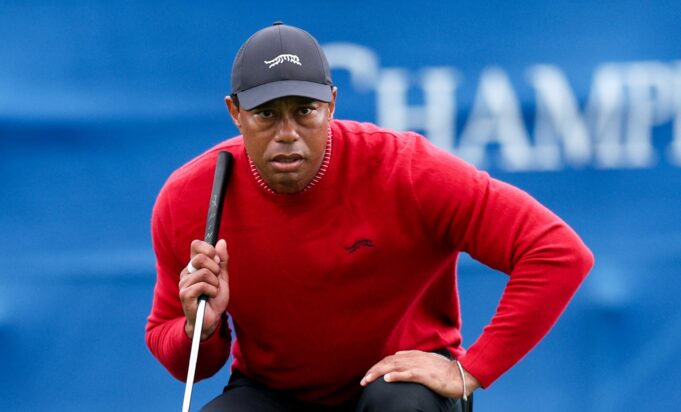Tiger Woods owns one of the sharpest short games the sport has ever seen. His 15 majors, 82 PGA Tour wins, and reputation as one of the greatest closers in history are built as much on clutch putting as they are on jaw-dropping drives. When Woods had the outright lead going into a final round of a major, he almost never let it slip.
That ability to pour in putts under pressure came from hours of relentless work. And in a lesson for Golf Digest, Woods revealed one of the core drills that fueled his putting dominance — a routine simple enough for amateurs to use.
Tiger’s Go-To Drill
The setup is straightforward: place two tees in the ground, one off the toe and one off the heel of your putter, and position yourself about four feet from the hole. The goal is to swing through the narrow gate, striking the ball flush on the center of the face.
“It ensures that I have to hit the ball flush and that I have to present the club square every time,” Woods explained. “In order to get through the tees, I have to swing it where I hit the ball right in the middle of the face.”
He starts by working one-handed. “I like starting with just my right hand. I probably hit 20 or 30 of these just to get a feel for it,” Woods said. “I like feeling the face rotate, I like feeling my right hand hit, I like feeling a load going back and a release coming through.” Once comfortable, he switches to both hands, alternating back and forth between the one-hand and two-hand versions.
Don’t Overdo It

Even Tiger admits the drill has a potential drawback. “As a kid, I used to spend hours doing this, and I realised that if you spend too much time doing this, you lose your lag putting feel,” he said. That’s why he uses it only as the foundation of his putting warmup — building rhythm and contact before moving quickly into six- and seven-foot putts, then focusing heavily on long-range lag putting to stretch his stroke.
Why It Works
For everyday golfers, Tiger’s drill is a perfect way to sharpen accuracy and center-face contact, the key to starting short putts on line. But the reminder to practice lag putting is just as important. Most amateurs face far more 25-footers than four-footers, and speed control often determines whether they leave themselves a tap-in par or a knee-knocker comeback.
Tiger Woods mastered both ends of the spectrum — draining clutch short putts and cozying long ones close. His simple gate drill, paired with focused lag putting, shows exactly how he got there — and how amateurs can follow his blueprint for lower scores.





